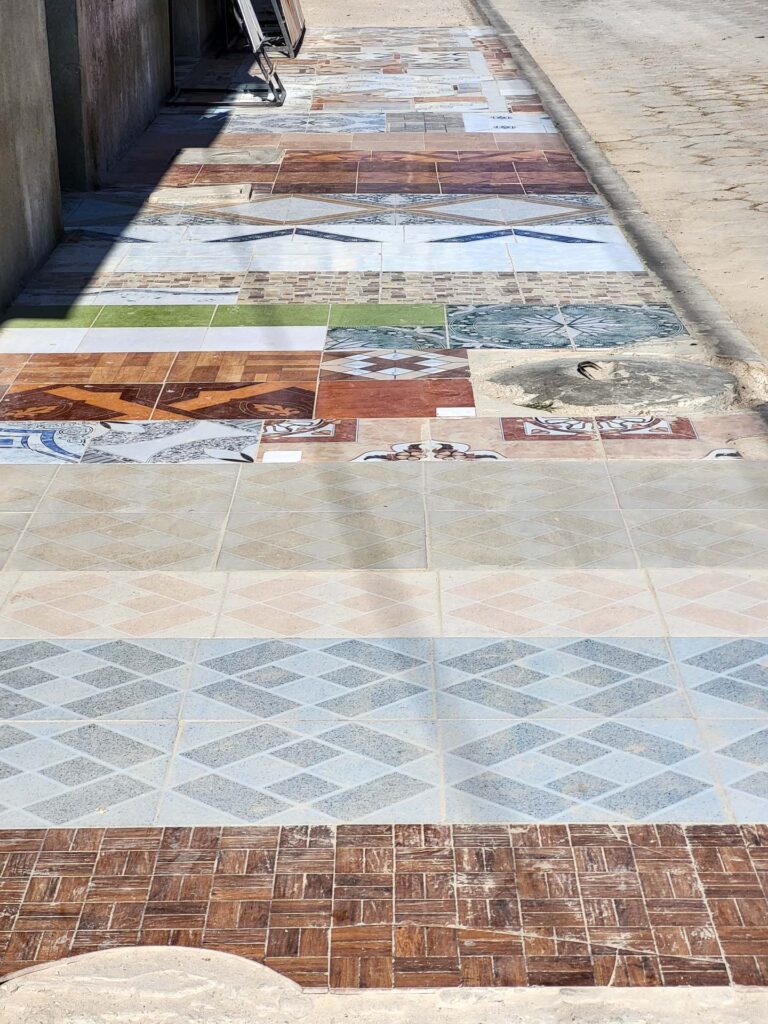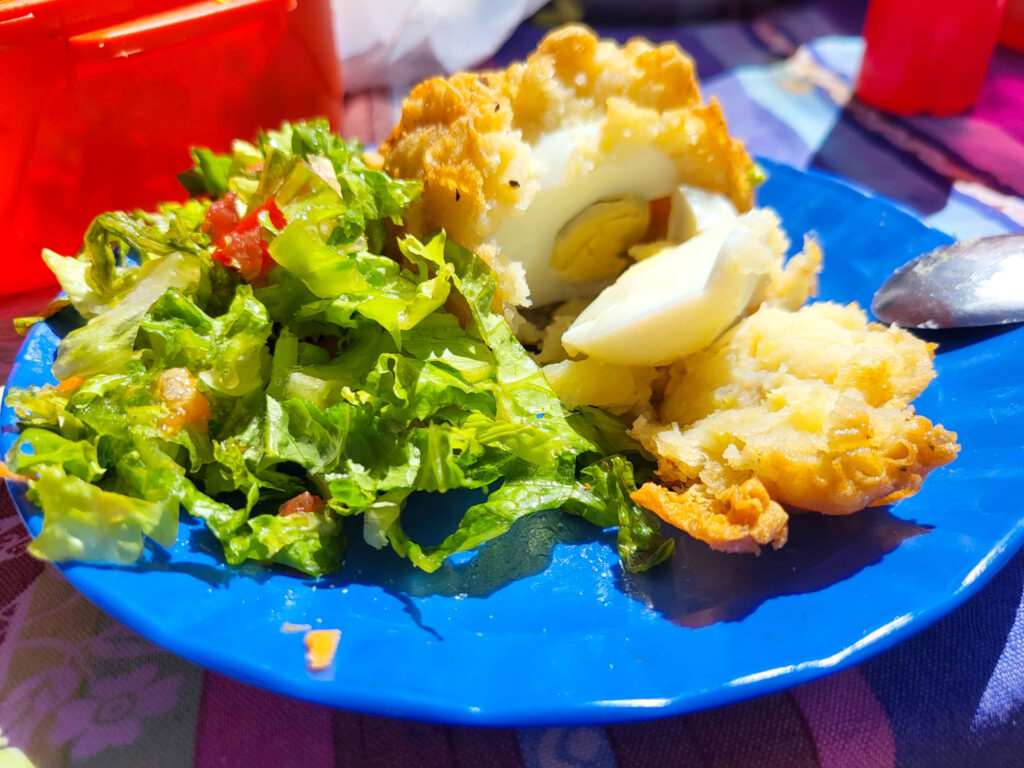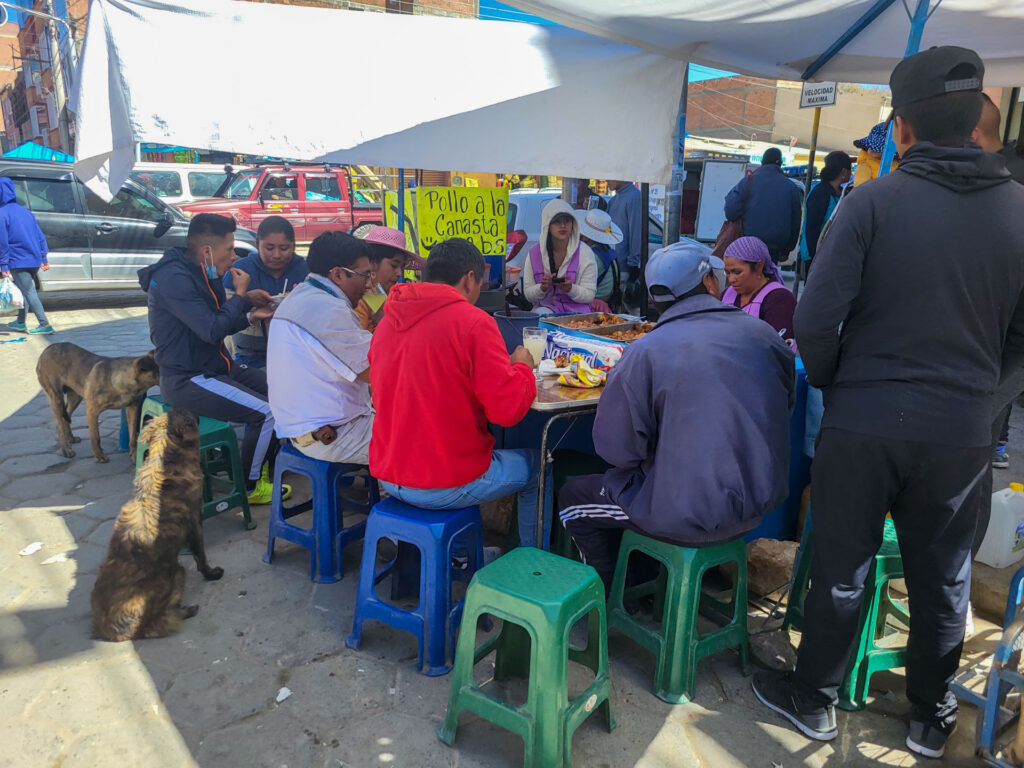After Humahuaca it wasn’t far to to the Bolivian border anymore. I was already in the altiplano at over 4000 meters and I wouldn’t get below 3000 meters until I went to Sucre later. Along the way I saw huge herds of alpacas and llamas that were grazing on the huge planes.
La Quiaca is the name of the border town on the Argentinian side while the town on the Bolivian side is called Villazón.
Crossing the Border
In an ideal world, if I hadn’t had a car the crossing would have been as simple as going to the two guys in the container office and having them bash their stamps into my passport but crossing the border in a car is not that simple. The stamp for leaving Argentina was super easy to get but the guy in the Bolivian container was not there and no one knew where he was. In the end, after trying out every container office, they sent me across the border to Bolivia to their main office where they finally gave me the other stamp. Next was the car; Argentina didn’t make a big fuss about it and they gave me a paper that I will need to give to Chile once I go back there and then the Bolivian border officer had to fill out a big form with all my car details which I had to sign and after a short inspection of my trunk’s content they sent me on my way. Finally, in Bolivia I had to pay a small fee for a “disinfection” where they sloppily sprayed down my car with some chemicals. Luckily, I could pay them in Pesos. because I did not yet have a chance to go to an ATM to get Bolivianos.
On my way over the border an older English Chap – probably in his 60s – with a Land Rover Defender chatted me up and told me that he had only been in Bolivia for 2 days because he could not find a map of the country anywhere. He was exasperated about that. “Unbelievable”, he said. So he basically fled the country over that and meanwhile I was thinking to myself: “Just use Google Maps like anyone else.” But I guess if that did not occur to him at all then he probably does not even have a smartphone or internet access.
In Villazón – the village on the Bolivian side – I had to do a couple of things.
- Get money
- Get a SIM card
- Fix my headlights
Getting money was as straightforward as going to the plaza del armas and going into one of the banks’ ATM booths. The biggest adjustment here was the exchange rate. I no longer had to divide by ~450 but rather just 7 to get to the euro price. I later also found out that they used 50 cent, 1,2 and 5 boliviano coins! That moment when your currency is worth enough to warrant having coins. On the plaza del armas was the goal of some kind of race because there was a huge arch that represented the goal and a commentator that frantically commented on something that was happening somewhere else – I could not get a glimpse of what he was talking about though.
Getting a SIM card was pretty straightforward as most small shops sold SIM Cards. I asked around which network was the best and they all told me that Entel was the best around here. Registering the SIM Card was not as straightforward because you needed to go through a lengthy USSD Dialog that asked me for a bunch of details – including my mother’s surname, here they inherit both surnames from their parents – where the lady from the store had to help me out with what to put in some of the questions. In the end we got it working though and so I went on to the market to get some food next.
On the market they sold all sorts of things, including stuff you would normally expect in a store like cereal, toiletries and shoes. As it turns out, there are barely any supermarkets in Bolivia because people prefer to go to the market and build a relationship with the ladies there.

At this point the race had been over and I drove to a mechanic to get my light fixed. The guy told me that he did not have the lamp that I needed so I needed to go to a car supplies shop first that luckily had these lamps in stock. I bought two, in case the other light gave out as well. They were German OSRAM lamps but the mechanic said that they were no good and he did not recommend them but he put them in nonetheless; I didn’t have any other after all.
The Drive to Uyuni
Driving to Uyuni, despite the relatively short distance, turned out to be way more tiring than expected. The roads weren’t straight and flat anymore like they were in Argentina; instead they snaked up and down mountains, were sometimes unsealed and Llamas and Vicunas were often blocking the road. I stayed for one night by the roadside in a dried out river bed before continuing on the next day.
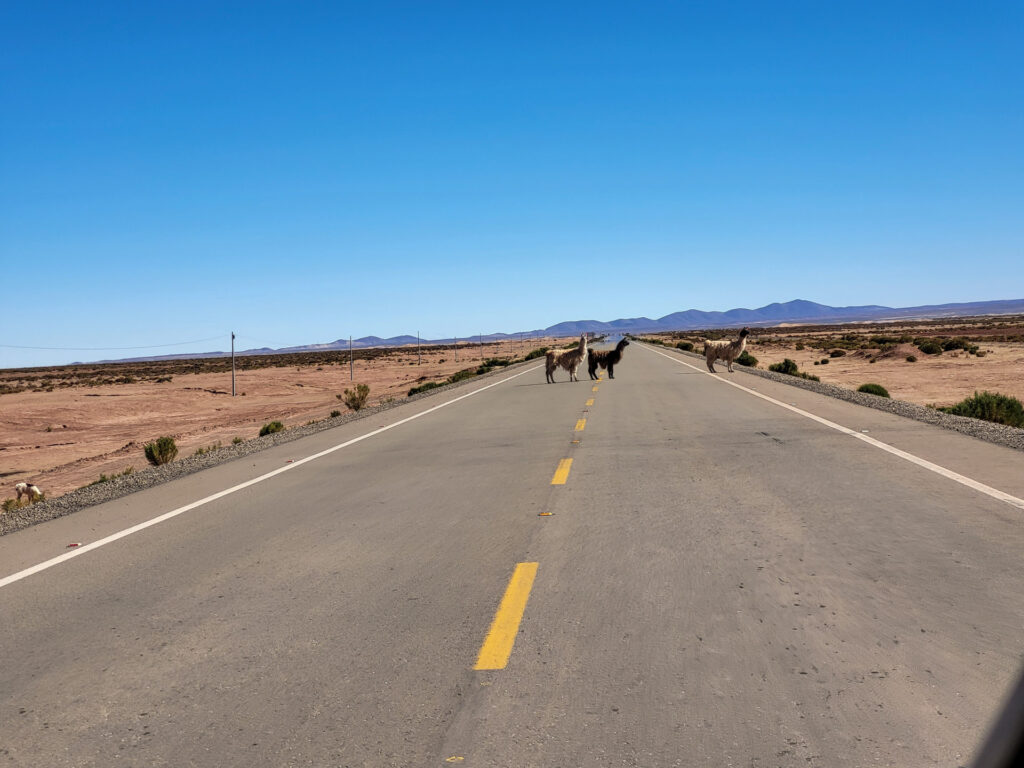
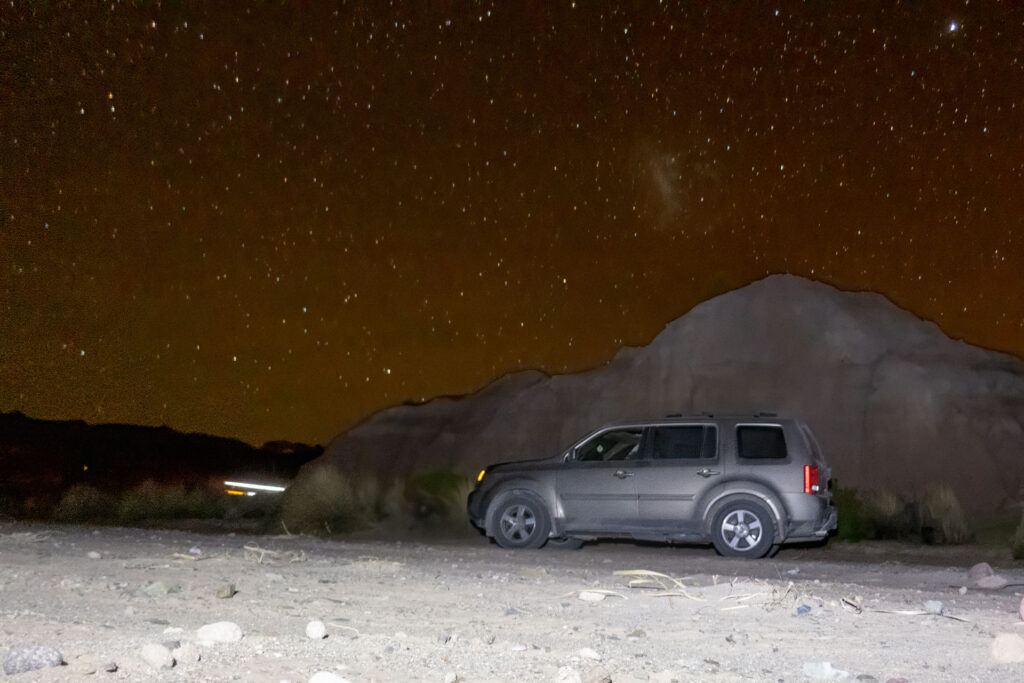
Uyuni Town
Uyuni as a town is surprisingly ugly. It is a dusty dry town with bare architecture and lots of tourist offices for visiting the salt flats. Luckily they had some decent cafés that I hung out in for bit with my laptop. The hostel that I stayed in was also one of the better ones. The town has a very strong wild west vibe. I felt a little bit like I was in Fyrestone from Borderlands 1 😂
